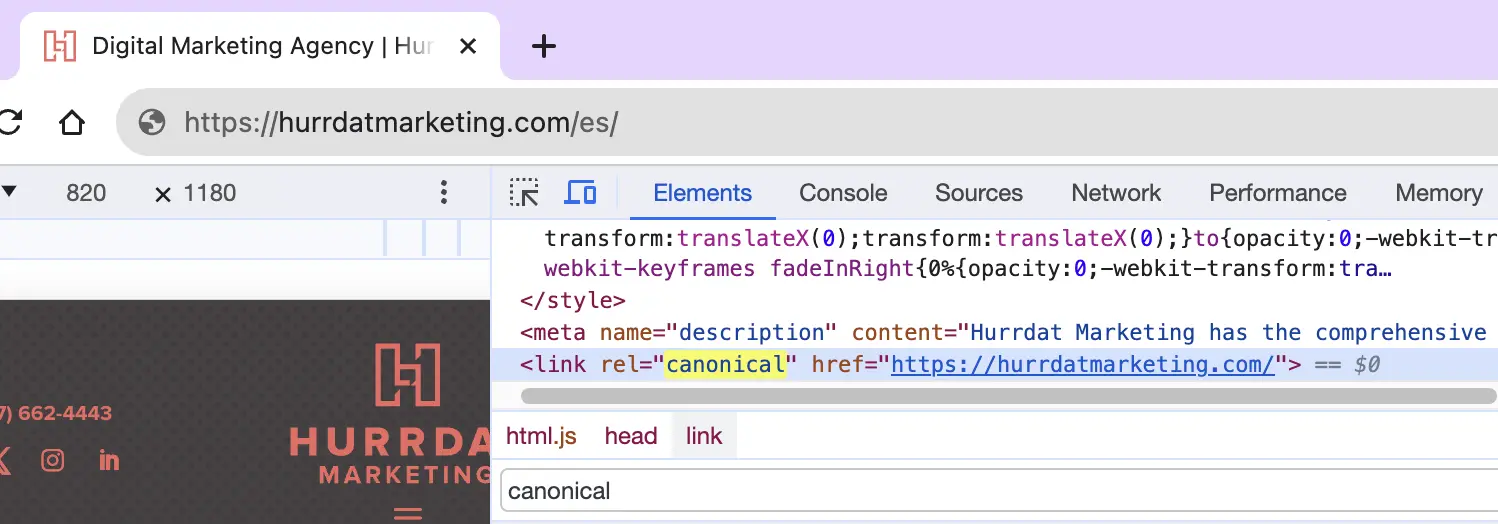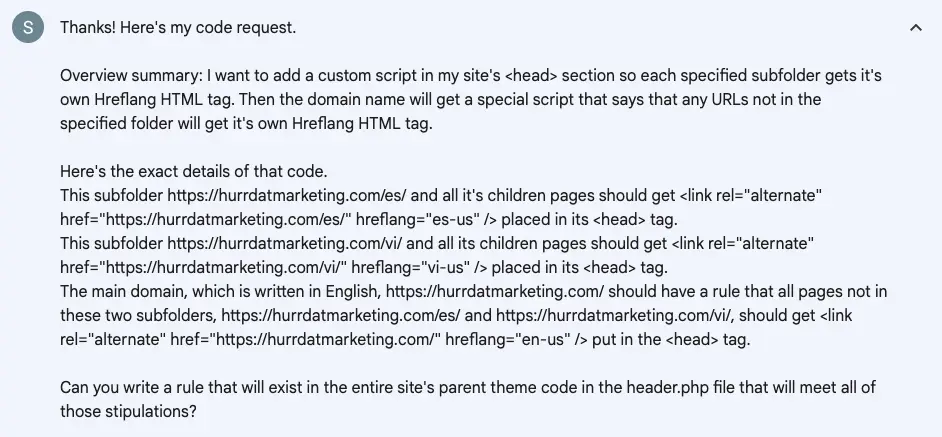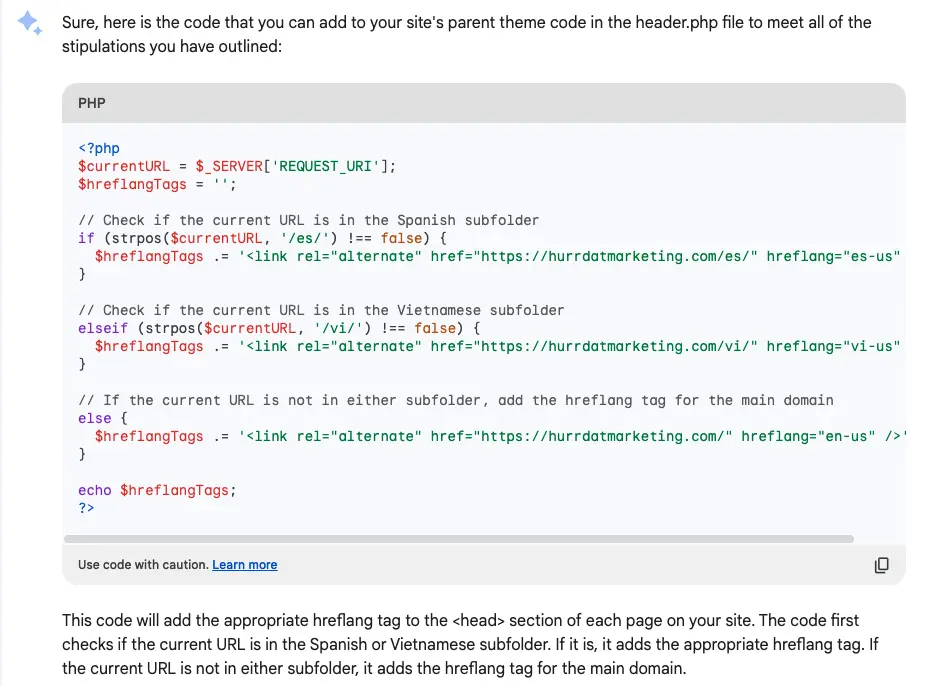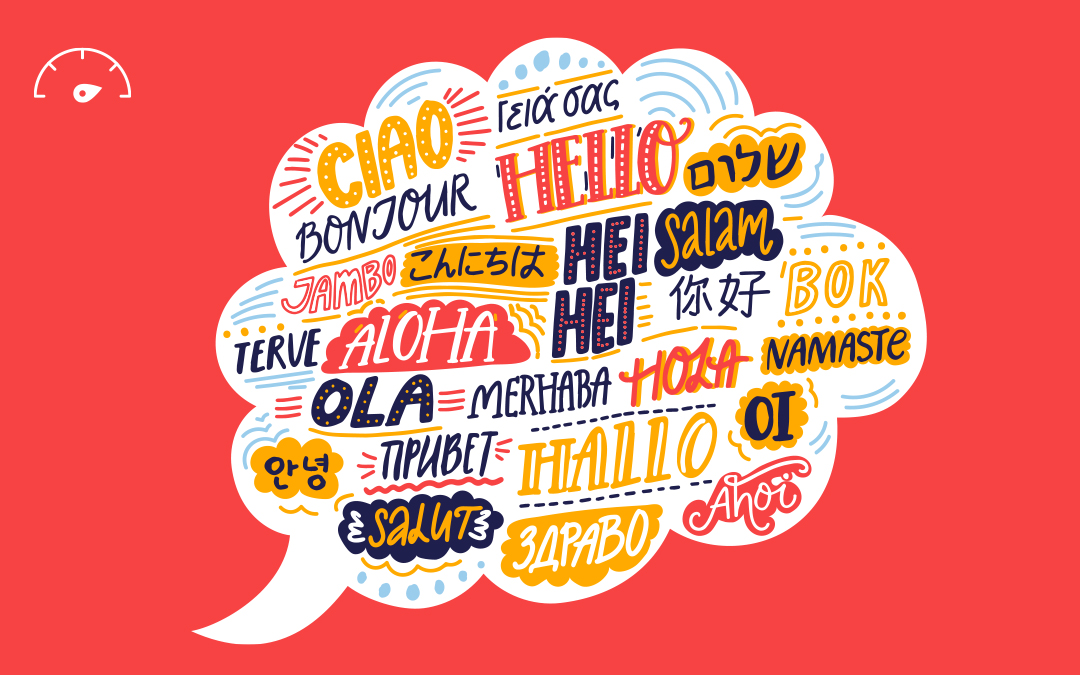With 21.6% of people in the U.S. speaking a language other than English, there’s a good chance your small business has multilingual customers living nearby. Using the right multilingual marketing strategy, small business owners can win over those customers in their native language. Here’s everything you should know about applying multilingual SEO on your small business website.
- What Is Multilingual SEO?
- Who Should Consider Multilingual SEO?
- Why Is Multilingual SEO Important?
- How to Implement Effective Multilingual SEO
What Is Multilingual SEO?
Multilingual SEO is the process of optimizing your small business website content for a language other than English so that it is discoverable in organic search when users look up information in another language.
Multilingual SEO goes beyond simple translation. While translation simply renders a message from one language to another, multilingual SEO adapts the full message—including currency, units of measurement, cultural references, and more—to a local market.
Who Should Consider Multilingual SEO?
“Multilingual SEO is most often used by large, multinational corporations operating in several geographical regions where users speak different languages. But multilingual webpages can be useful for bilingual small businesses in the United States, too! An English and Spanish-speaking business owner may target their two audiences in the U.S. with an hreflang=”en-us” tag for English pages and an hreflang=”es-us” for Spanish pages in a Spanish website subfolder.” — Sierra Karst, SEO Strategist at Hurrdat
Everyone from global-scale brands to small businesses in the U.S. should consider adopting a multilingual SEO strategy, including:
- Dentists
- Doctors
- Electricians/HVAC
- Health Care Professionals
- Lawn Care/Landscaping Companies
- Lawyers
- Mechanics
- Plumbers
- Real Estate Agents
- Restaurants
Even if you don’t fall into one of these categories, this localization technique may still work for you. Here are a few questions to ask yourself to determine whether multilingual SEO is right for your business:
- Do I have a target audience that speaks another language? If so, which language(s)? Use the Modern Language Association Language Map or Migration Policy Institute’s State Immigrant Data Profiles to determine how much of your local community speaks another language and which languages they speak.
- Is my current small business marketing strategy established and successful? This advanced SEO technique is not for businesses just starting out. It’s for more experienced owners looking to improve their existing local marketing strategy.
- Do I have the budget/resources for multilingual SEO? The cost of localization can vary widely depending on the target language, complexity of the topic, number of pages, and other factors, so complete thorough research and set a realistic spending plan ahead of time.
- Does someone on my staff speak the target language? Your website is only the first point of contact for customers, so if you don’t have employees to provide ongoing support—like the completion of the services or returns—to non-English customers, you should pass on multilingual SEO.
- Are my competitors’ websites translated into other languages? If your competition already has translated webpages, you’re likely losing business to them. And if they don’t, you may have just found a competitive advantage.
Why Is Multilingual SEO Important?
Multilingual SEO is important because it helps businesses of all sizes reach a larger audience by improving the customer experience for non-English searchers. While multi-language SEO is usually done by large, international companies, here’s why your local business should use multilingual SEO on your website.
Reach More of Your Local Audience
While English is the most spoken language in the U.S., there are a variety of other languages spoken in households across the country, like Spanish, Chinese, and Tagalog. And though many of these households also speak English, 50% of organic searches are multilingual and 72% of people favor websites in their native language.
So, using languages that are commonly spoken near your small business can help you cater to customers who are actively seeking out a non-English experience.
Gain a Competitive Advantage
Research your competitors to see if their websites are available in languages besides English. Chances are, they aren’t because only 5% of websites are multilingual. This offers a valuable opportunity to easily win over multilingual customers in your area since you’ll be the only one doing it.
Enhance User Experience
By providing content in a visitor’s native language, multilingual SEO ensures that users can easily find, understand, and engage with your small business. It puts your translated webpages into more relevant searches, including voice searches. This SEO effort also demonstrates that your company takes the extra step to assist customers and cater to their needs, which goes a long way in building trust.
Reduce Your Website’s Bounce Rate
With a better user experience often comes a lower bounce rate. That’s because your content becomes more relevant and useful for people who are on your site, so they’re likely to stick around and explore longer.
Multilingual SEO also helps prevent people outside of your intended audience from landing on your website in the first place. By properly optimizing your webpages in another language, you’re teaching search engines which results you should be appearing in (and which searches you should be excluded from). This way, your website traffic is made up of people who actually want to be there and generally know what to expect before clicking through to your site.
Improve Conversion Rates
Ultimately, visitors who are able to understand your content, find the information they need, and trust your brand are more likely to take your desired action—like making a purchase or filling out a contact form. Businesses with multilingual websites typically see a 70% increase in conversions.
How to Implement Effective Multilingual SEO
Below are the steps to use multilingual SEO on your business website.
Create Multilingual Buyer Personas
Speaking another language usually indicates a difference in culture, too, and different cultures will have different values and behaviors–which means you may need to create separate buyer personas to accommodate these differences.
For example, your monolingual and multilingual audiences may have unique customs around gift-giving. Your multilingual customers might view gift-giving as a culturally significant practice with strict etiquette rules, where the type of gift, its packaging, and presentation all hold significant meaning. In contrast, your monolingual audience may view gift-giving as more casual and less regimented.
In this instance, if your small business is running a holiday marketing campaign with a product landing page, the content will need to be different for each audience. For your English-only audience, it might be appropriate to sell the product as a last-minute gift idea, which your multi-language customers could find offensive. For your multilingual consumers, you’d probably be better off focusing on its packaging and potentially upselling personalized wrapping services.
Complete Multilingual Keyword Research
Start with one of the most essential aspects of SEO–keyword research. The phrasing of keywords in different languages can change based on grammar and dialect, so it’s likely that not all of your keywords will be a direct translation. Start with one-word keywords and make your way to long-tail keywords by analyzing related searches. Here are a few keyword research tools that support multiple languages:
Look at Your Competitor’s Multilingual Pages
If your multilingual customers have immigrated from another country, they might be used to differently structured webpages. This may seem like a small element of multilingual SEO, but it can really help the user experience if your customers feel more comfortable navigating the structure of your small business website.
Look at competitor websites that have translated webpages to see if they’ve laid out their information differently. You could even check similar businesses in the foreign countries to see how their multi-language webpages are designed. Once you’ve collected this information, if there are major differences, conduct A/B testing with two website designs–one in line with your regular webpages, and one in line with the alternate website design choices to see which version performs better with your target audience.
Translate Your Content
Once you have all the necessary research, it’s time to localize your website. We recommend starting with your core webpages, like your homepage, product/service pages, location pages, and contact page. If your budget and resources allow, then you can convert your about page, FAQs, top-performing blogs, and more.
First, create an individual webpage for every language you plan to target. Mixing languages on one page can create confusion for your visitors and hinder search engines from indexing and ranking your site in search results.
Next, either consult native speakers or hire a Language Service Provider (LSP) like PoliLingua, Transperfect, or RWS to localize your existing copy. You can try to translate this content yourself (or even use a translation app), but some English terminology and cultural references can get lost in translation, especially with idioms and metaphors. Take these international marketing fails from major brands as examples:
- American Motors: “The Matador” car didn’t go over well with Spanish speakers, as “matador” means “killer” in Spanish.
- Coors: The campaign slogan “Turn It Loose” directly translates to a well-known phrase that means “suffer from diarrhea” in Spanish.
- KFC: The slogan “Finger-lickin’ Good” directly translates to “eat your fingers off” in Chinese, which resulted in a rocky opening for Chinese locations.
Having a content localization strategy is more than just naming conventions for your products and services, though. Here are the key aspects to consider when applying multilingual SEO to your website:
- Cultural Sensitivity: Be mindful of cultural norms, values, and traditions. Avoid content that may be offensive, insensitive, or inappropriate for the target culture.
- Linguistic Accuracy: Ensure that the translations are grammatically correct, idiomatic, and search engine optimized for the target language. Avoid literal translations that may not convey the intended meaning.
- Regional Adaptations: Consider local dialects, slang terms, and regional references. Adapt measurements, currencies, and date formats to align with local conventions.
- Imagery and Visuals: Use images that are culturally appropriate and resonate with the target audience. Avoid imagery that may be considered offensive or insensitive.
Write Localized Metadata
Metadata is an important aspect of SEO in any language–it communicates what your page is about to search engines in a language they understand. Once you have your keyword research and individual pages, use those keywords to write SEO titles, meta descriptions, and main header tags in your target language.
Decide URL Structure
Because your multilingual webpage is a separate page from its English version, it needs its own URL. In this alternate URL, you’ll indicate the page language with ISO codes to help Google index it properly. You can do so in one of three ways:
- Top-Level Domains: This is the second part of your URL after the domain name, usually something like “.com,” “.net,” or “.gov.” Other languages can be indicated by country codes like “www.domain.es” for Spanish, “www.domain.de” for German, or “www.domain.fr” for French.
- Subdomains: Subdomains appear in the first part of your URL, like “www.” For specific languages, you can use “es.domain.com” for Spanish or “fr.domain.com” for French.
- Subdirectories or Subfolders: Subfolders come after your URL with a backslash, “https://www.domain.com/subfolder.” This splits your website content into folders dedicated to each language. You might see “www.domain.com/fr” for French, or “www.domain.com/de” for German.
When asked which option is best for small businesses, Hurrdat Marketing’s SEO Strategist Sierra Karst explained,
“I recommend beginners use subfolders because the process is straightforward, they’re great for user experience, and they help with overall website organization. Each subfolder should contain a translated version of the entire site. So, if we use the Hurrdat Marketing website as an example, this is what the folder structure would look like for English, Spanish, and Vietnamese versions.”
Homepage URLs
- English: https://hurrdatmarketing.com/
- Spanish: https://hurrdatmarketing.com/es/
- Vietnamese: https://hurrdatmarketing.com/vi/
SEO Service Page URLs
- English: https://hurrdatmarketing.com/services/seo/
- Spanish: https://hurrdatmarketing.com/es/services/seo/
- Vietnamese: https://hurrdatmarketing.com/vi/services/seo/
Use Canonical Tags
To prevent pages from being marked as duplicate content, and to clear up any confusion with Google about which version should be considered your main page, it’s important to set up canonical tags.
In the Hurrdat Marketing website example, the Spanish and Vietnamese homepages and SEO service pages would be canonicalized using the English version—”https://hurrdatmarketing.com/” and “https://hurrdatmarketing.com/services/seo/” respectively.
To check that your canonical tags are set up properly, go to your URL, left click, and hit “Inspect.” In the “Elements” tab, Control + F to search “canonical” and find the <link rel=”canonical” href=”url_of_canonical”> element. Then, check if it matches the URL in your planned list of canonical URLs.

Set Up Hreflang Tags
To make it easier for Google to crawl, index, and rank your multilingual webpages, you can use hreflang tags—code that tells search engines what language your website is written in and what country or geographical region the webpage is intended for.

Hreflang attribute tags are completely optional, so don’t worry if you leave this step out—Google can still find your alternate language pages without them. However, this step does make it easier for Google to serve users webpages in their preferred language.
Setting up hreflang tags isn’t recommended for beginners. It’s an advanced technical SEO task that is best left to professionals. However, if you want to create hreflang tags on your own, you can do so with generator tools and WordPress plugins like TranslatePress.
While each site will vary, here’s the general process breakdown for a WordPress site according to Hurrdat’s SEO Strategist Sierra Karst:
Step 1: Generate Hreflang Tags
Either use the generator tool or follow Google’s standard hreflang syntax: <link rel=”alternate” hreflang=”lang_code” href=”url_of_page” /> to create an hreflang tag for each language’s parent page. We’ll worry about all the subfolder’s child pages later.
For Hurrdat Marketing’s homepage in English, Spanish, and Vietnamese, the hreflang tags would look like:

Step 2: Code Hreflang Rules into WordPress Theme
You’ll only be able to edit the entire site’s HTML <head> code by editing your WordPress site’s global parent theme. Developers should write a custom script for each language’s hreflang tags in each corresponding subfolder and all its child pages.
If your small business doesn’t employ a developer or have the budget to hire a freelancer, AI can be a cost-effective way to write hreflang rules on a WordPress theme’s header.php file.


Then, a developer should review the code and test it for bugs on a staging site to prevent site-wide errors.
Step 3: Add Hreflang Tags to HTML <head> Sections
Hreflang tags can be placed in only one of these locations on a page:
- HTML <head>
- HTTP Headers
- XML Sitemap
To apply it to the HTML <head> section, go to your WordPress dashboard > Appearance > Theme File Editor. From there, you can select your active parent theme in the “Select theme to edit” drop-down menu. Then, find and click the “header.php” from the “Theme Files” sidebar menu.
Once your screen looks something like the below screenshot, you’re ready to add your code into the entire site’s <head> section. Paste the code you created in step two between the <head> and </head> code in a spot that does not disrupt other pieces of code.

Step 4: Inspect Pages for Hreflang Tags
To check that your header.php rules are correctly implementing hreflang tags across your site, go to your URL, left click, and hit “Inspect.” In the “Elements” tab, Control + F to search for “hreflang” to see if each page has the correct hreflang tag.
For more assistance DIY-ing hreflang tags, use these Google resources:
Review Linking Structure
Finally, you need to look at your internal and external links. If your new page links to another resource, that resource needs needs to match the language you’ve used on your page (English to English, Spanish to Spanish, Vietnamese to Vietnamese). Similarly, if you’re linking to your own webpages, make sure they’re also in the target language. This will maintain a consistent and smooth user experience for customers and search engine crawlers.
Need some extra help creating a fantastic small business website? Local Search Fuel by Hurrdat offers ongoing local SEO services as well as small business website development to give your business a well-optimized online presence. Get started today!

Stefanie Vanderbeek
Stefanie Vanderbeek is a content strategist and writer who specializes in long-form digital content and website SEO optimization. Stefanie earned her Bachelor of Journalism from the University of Nebraska-Lincoln in Advertising and Public Relations in 2021. In her free time, you can find Stefanie reading, deep diving into video game lore, singing in her professional vocal group, or traveling the world!
